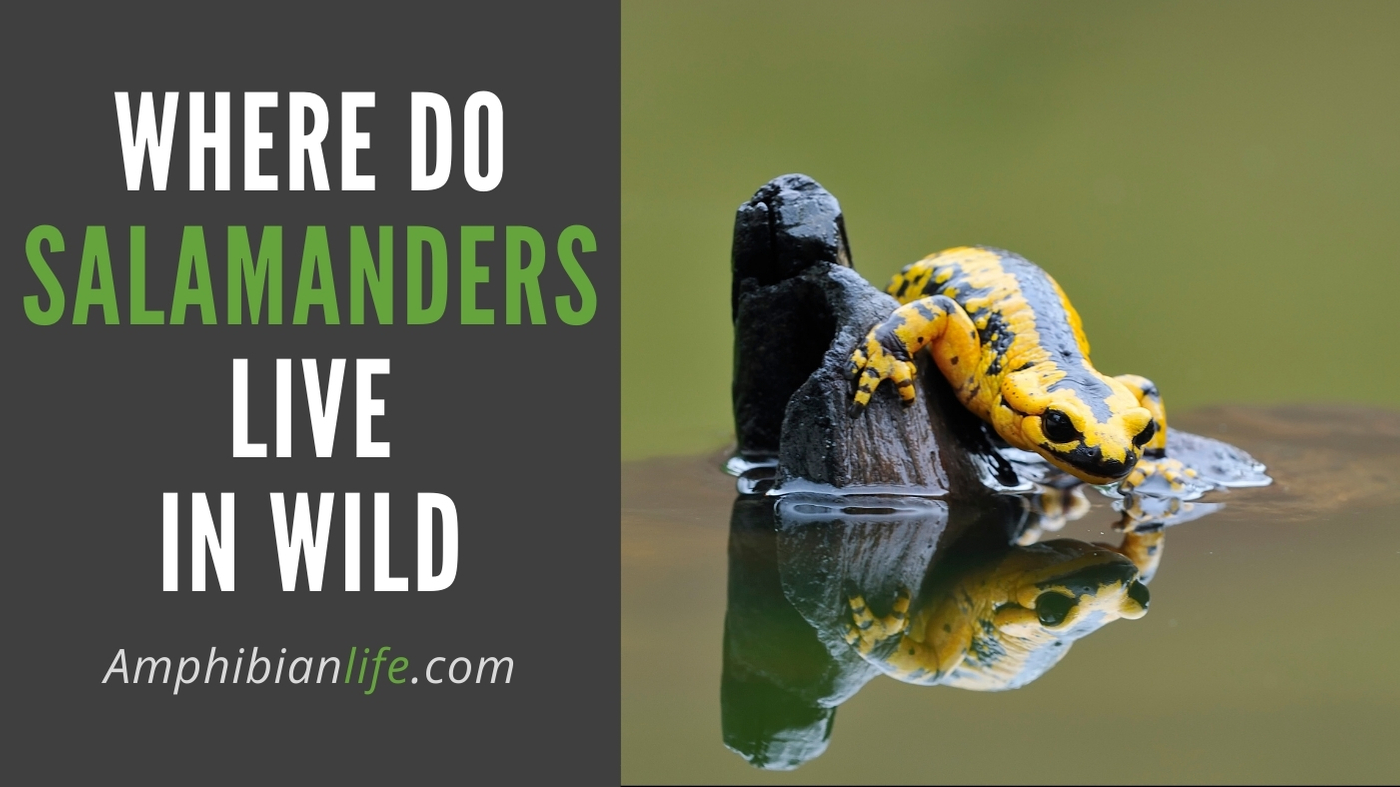
Salamanders are amazing creatures and it’s great to see them a wild.
It’s also interesting to learn about where salamanders live and the different environments that various salamander species enjoy. So, where do salamanders live?
Salamanders are found around the globe, particularly in the Northern Hemisphere. This includes North America, Europe, Central America, Northern Asia and the Mediterranean.
The Amazon Basin is the only natural salamander habitat in the Southern Hemisphere.
Water is essential to a salamander’s survival, so salamander’s live in wet environments.
Each type of salamander enjoys a slightly different habitat. In this article, we find out where several different types of salamanders live.
Where do Tiger Salamanders live?
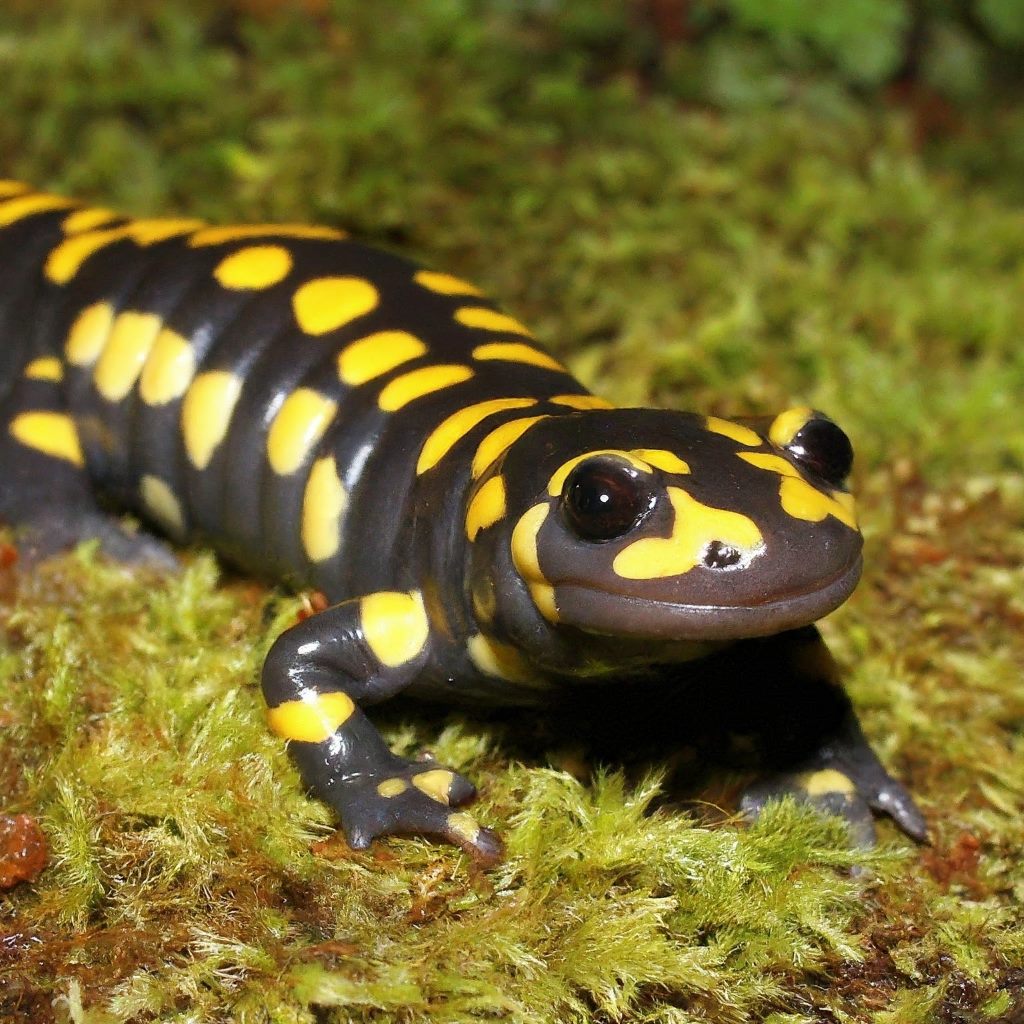
One of the most common species of salamanders is the Tiger salamander (Ambystoma tigrinum). Its native habitat spans the continental US, as well as Southern Canada and Northern Mexico.
Tiger Salamanders usually have a black or very dark coloured body, with larger yellowish spots or stripes. It’s these stripes that give the Tiger Salamander its name.
Tiger Salamanders are usually found near seasonal bodies of freshwater, such as small streams and ponds. They lay their eggs in the water, as their larvae are exclusively aquatic.
Although they can grow to 14 inches long, spotting a Tiger Salamander can still be a challenge. They tend to spend most of their day in a wet underground burrow and are most active at night.
If you want to spot one of these highly secretive creatures, you should look during the rainy season. They tend to become more active and venture away from the safety of their burrows just after rainfall.
Where do Axolotls live?
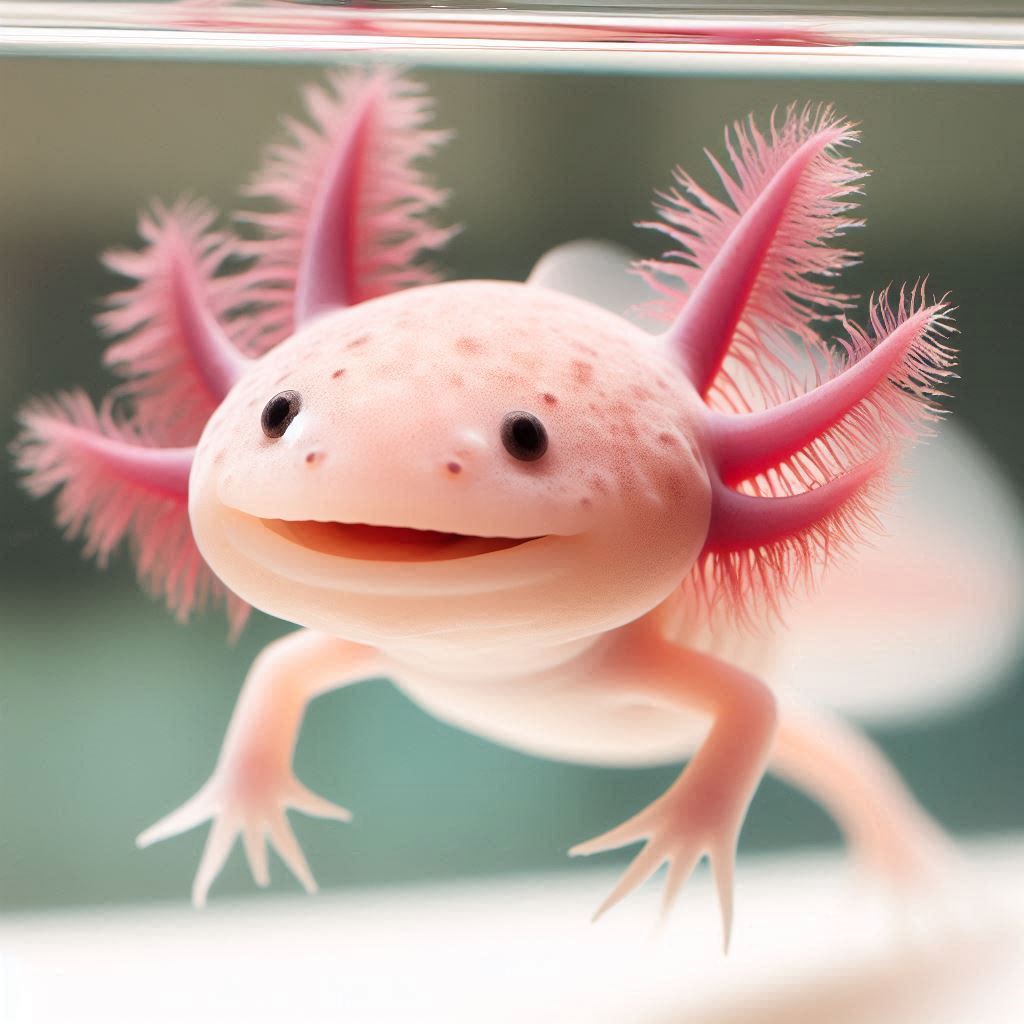
The Axolotl (Ambystoma mexicanum), also known as the “Mexican walking fish”, is a unique and very interesting species of salamander.
Axolotls normally spend their entire life in an aquatic environment, because they reach sexual maturity without any kind of metamorphosis!
Despite having little resemblance and not becoming terrestrial as they mature, they are close relatives of the Tiger salamander.
Axolotls have a very limited natural habitat. They once lived in the lakes around Mexico City. Now, the canals of Xochimilco, the remnants of one of these lakes, is the only place they are still found.
Their natural environment has been drained and polluted due to the constant expansion of Mexico City. The Axolotl is currently critically endangered, with only a very small population still alive in the wild.
This salamander species is widely known for its exceptionally refined regenerative process. Axolotls are able to regenerate limbs and vital body parts. This includes damaged internal organs and parts of their spine.
Where do Slimy Salamanders live?
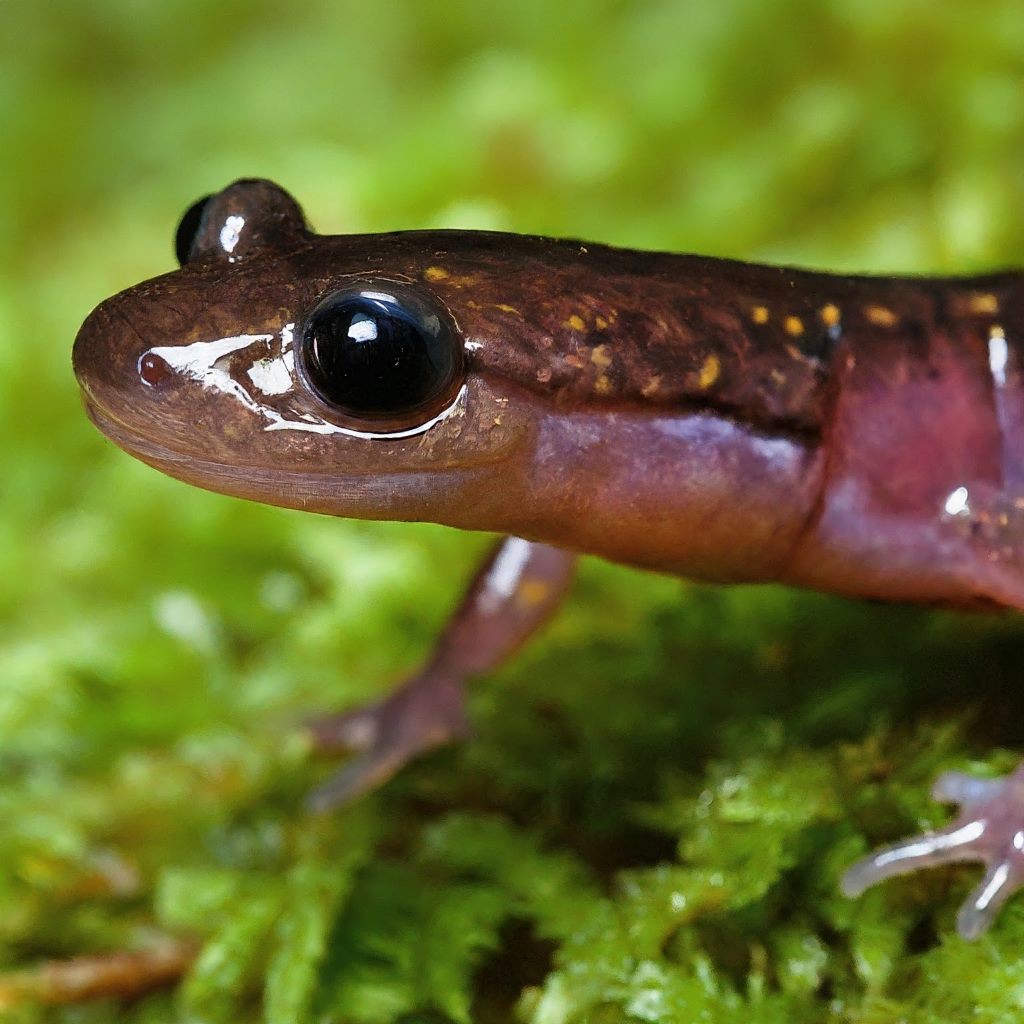
Contrary to the Axolotl, the Northern Slimy Salamander (Plethodon glutinosus) is completely terrestrial. It does not have an aquatic larval stage.
Slimy Salamanders are very common in the Eastern and Central US. They inhabit woodlands and ravines, always staying close to bodies of water.
Slimy Salamanders are usually between 5 and 7 inches long. As you would expect from their name, they have a characteristically slimy skin. They prefer moist soil and usually hide during the day beneath logs and rocks or in burrows.
They are nocturnal predators and most active on damper nights.
Slimy Salamanders are usually black with very small white or yellowish dots on their body. This makes them very hard to spot in low-light situations.
To find a Slimy Salamander in the wild, it would be best to search woodland after heavy rainfall. Even then, you would probably need to look under objects to discover their hiding places.
Where do Fire Salamanders live?
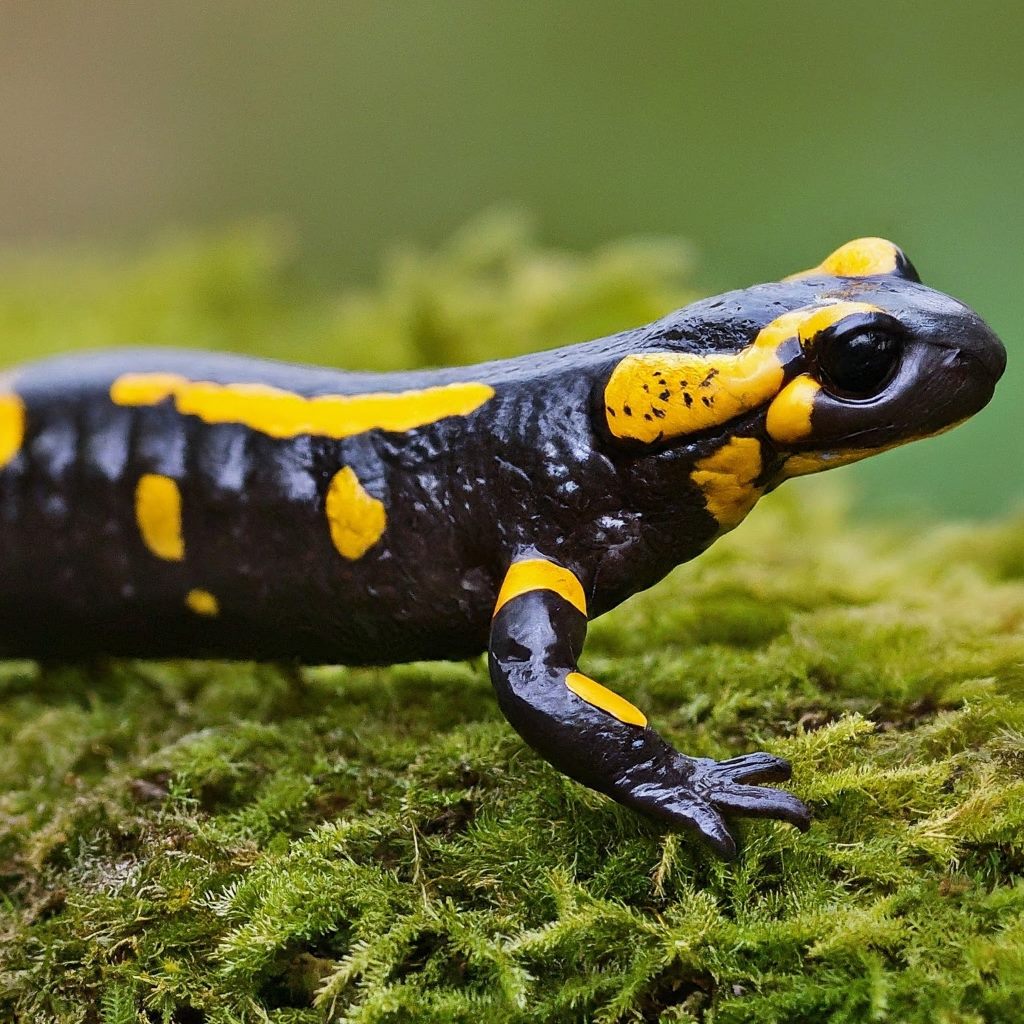
The Fire salamander (Salamandra salamandra) is native to Europe. Its habitat includes most of the western, central and Balkan areas of the continent.
Fire Salamanders usually live in forests. Though smaller, they are similar to Tiger Salamanders, as both have black bodies with yellowish spots.
During the daytime, Fire Salamanders usually hide beneath fallen tree trunks and leaves, trying to keep themselves moist and cool.
In the evening and at night, they hunt for insects and other smaller animals.
Just like most Salamanders, Fire Salamanders tend to live near bodies of water, where they can lay their eggs.
If you know how to search for them, they can be a quite common sight in the European woodlands. This is especially true after rainfall, which makes them more energetic.
Here are some key features of the fire salamander:
- Size: Adults typically reach a length of 10-20 centimeters (4-8 inches).
- Coloration: The fire salamander has a distinctive black and yellow pattern, which is thought to deter predators.
- Toxicity: The salamander produces toxins through glands located behind its eyes and on its skin. These toxins can cause irritation or even paralysis in predators.
- Habitat: Fire salamanders are found in a variety of habitats, including forests, woodlands, and meadows. They are often found near water sources, such as ponds, streams, and rivers.
- Diet: Fire salamanders are carnivores and feed on a variety of invertebrates, including insects, worms, and slugs.
- Reproduction: Fire salamanders are ovoviviparous, meaning their eggs develop inside the female’s body. The females give birth to live young, which emerge from the eggs within the mother’s body.
Fire salamanders are fascinating creatures that play an important role in the ecosystems where they live. They are also popular pets among reptile and amphibian enthusiasts. However, it is important to note that fire salamanders are poisonous and should be handled with care.
Where do Spotted Salamanders live?
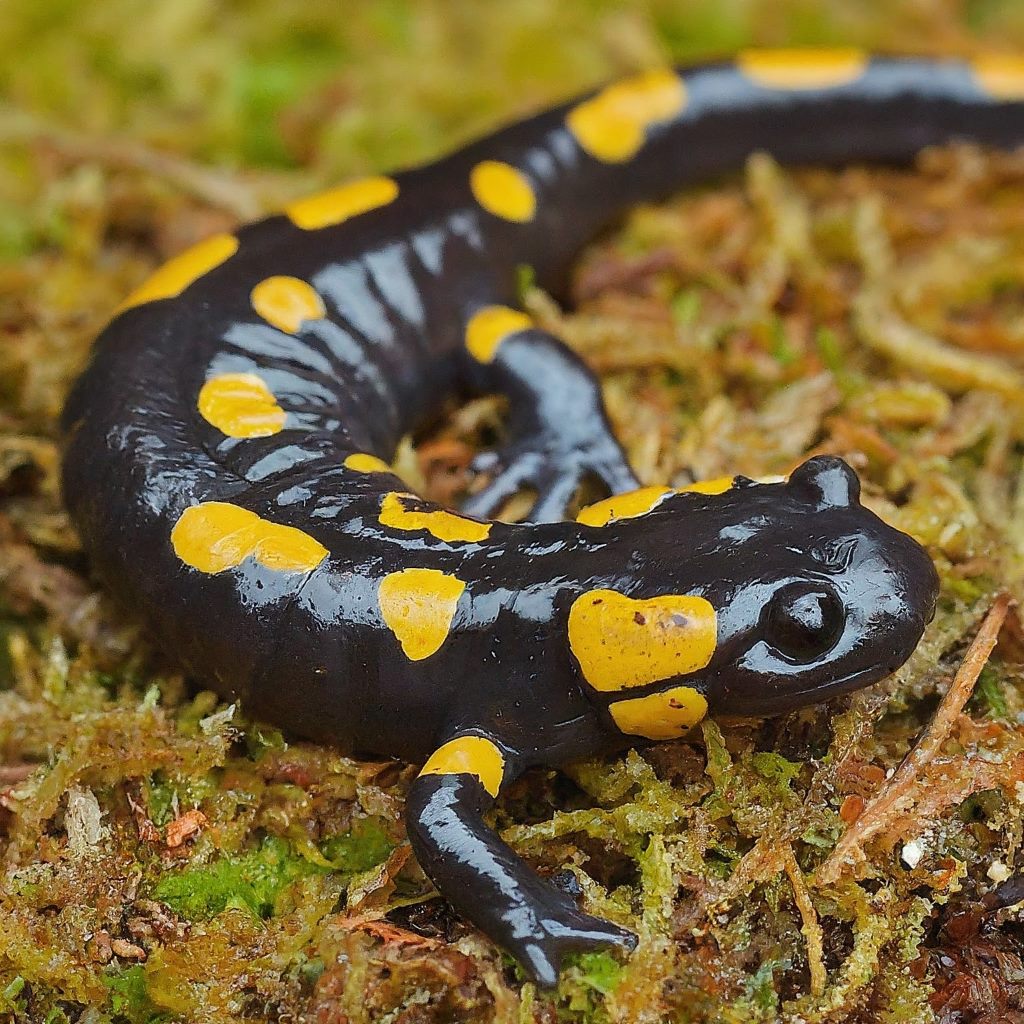
The Spotted Salamanders are native to densely forested areas of the Eastern US and South-Eastern Canada.
Spotted salamanders have similar coloring to Tiger Salamanders, though are usually smaller. The main ways to tell them apart are their size difference and comparatively smaller yellow spots.
Spotted Salamanders generally live near seasonal pools of water that have no fish. The lack of fish is important in order for the salamanders to breed, as fish eat their eggs and larvae.
Like all Salamanders, Spotted Salamanders need a cool, damp environment. They spend most of their time underground and rarely venture outside.
Their reclusive nature is what makes Spotted Salamanders a rare sight. If you wish to find one, your best bet is just after heavy rainfall, and preferably towards the evening.
Here are some key features of the Spotted Salamander:
- Size: Adults typically reach a length of 10-15 centimeters (4-6 inches).
- Coloration: Spotted Salamanders are typically black or dark brown with yellow or orange spots or blotches.
- Habitat: Spotted Salamanders are found in a variety of habitats, including forests, woodlands, and meadows. They are often found near water sources, such as ponds, streams, and rivers.
- Diet: Spotted Salamanders are carnivores and feed on a variety of invertebrates, including insects, worms, and slugs.
- Reproduction: Spotted Salamanders are ovoviviparous, meaning their eggs develop inside the female’s body. The females give birth to live young, which are typically 10-15 millimeters long.
Where do Japanese Fire-Bellied Newts live?
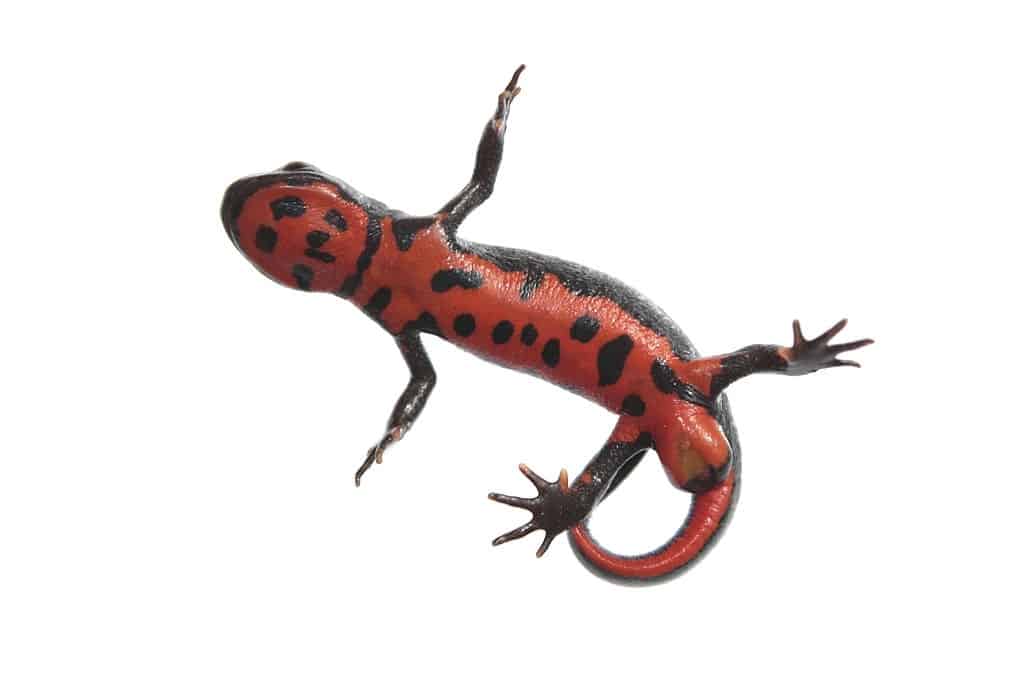
Newts are salamanders with one main difference. Where adult salamanders are mostly land-based, adult newts have a semi-aquatic lifestyle.
Otherwise, newts and salamanders are very similar in terms of habitat and behavior. They live in the same moist environments, with little ponds and slow-moving bodies of water.
The Japanese Fire-Bellied Newt (Cynops pyrrhogaster) is native to the dense forests of the Japanese archipelago.
They usually have a black or dark brown back, with reddish spots on their belly. They can grow to around 5.5 – 6’’ long, which makes them medium-sized compared to most other salamanders on this list.
Please note: this particular newt is very poisonous! Their skin secretes a very potent neurotoxin. If you spot a Japanese Fire-Bellied Newt, it would be a good idea to leave them alone…
